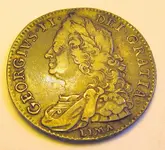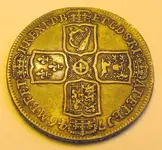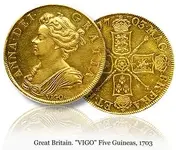Hello Tannyhill
In answer to your question? Game of thrones on steroids!
In short version in breeding and Mafia economies fighting for dominance over trade!
The long version
There was a series Monarchs: the Spanish Hapsburg dynasty was replaced by the Bourbon dynasty of France: Philip (Felipe) V ruled 1700-46, Ferdinand (Fernando) VI ruled 1746-59, Charles (Carlos) III ruled 1759-88, and Charles (Carlos) IV ruled 1789-1803.
The Spanish Hapsburg was so inbred that was unable have healthy children either having mental issues or physical health issues. Next in was line of succession to the Spanish throne was through marriage was the Bourbon dynasty of France.
The early years of 18th century were a period of severe adjustments for Spain, long accustomed to “calling the shots” in Europe. These years were marked by a new royal dynasty, the French Bourbons, a centralization of power, and a humiliating loss of territory in Europe.
Britain, France and Austria were the main Western European powers during these early years, and Spain was reduced to a “junior” role, although it still retained its American and Pacific possessions. Hence in this time french ships carrying silver and gold from Callao!
The struggle for power between Britain and France during the 18th century frequently placed Spain in an awkward situation. The Bourbon connection between France and Spain, and Spain’s concerns over Britain’s strength in the Atlantic certainly gave France a decided edge where Spanish support was concerned.
But France’s own ambitions in the Americas, to the detriment of Spanish interests, sometimes made Spain’s support of France ambivalent. Still, as a general rule, Spain found itself as France’s junior partner. Indicative of the French-Spanish alliance are the three Family Compacts signed between the two countries in 1733, 1743, and 1761, in each of which Spain backed French interests.
Broadly speaking, in the first Compact, France backed Spain’s right to recover possessions in Italy in return for Spain’s support in the War of the Polish succession. Spain resented the emasculation of its power in Europe, and given Spain’s historical domination in the Italian peninsula, Italy became an obsessive factor in its foreign policy following the Treaty of Utrecht (1713).
As it happens, this obsession coincided with the ambitions of Philip V’s second wife, the headstrong and imperious Italian-born Isabel Farnese of Parma. Since her husband’s children by his first wife were first in line for the Spanish throne, she schemed to obtain Italian kingdoms for her two sons. The Compact proved beneficial. In 1734, Spanish troops recovered Naples and Sicily and Isabel’s older son Charles was crowned King of Naples (or more commonly King of the Two Sicilies).
The Second Family Compact (1743), this time in support of France’s involvement with the Austrian War of Succession, resulted in the installation of Charles’s younger brother Philip as duke of Parma and Piacenza in 1748.
The recovery of lost European territory might have appeased Spanish pride for the moment, but it was a mere illusion of power. It was Spain’s last hurrah on the European scene and, indeed, had diverted the country’s attention from the on-going dangers to its transatlantic territories, the source of its wealth and remaining influence. Here the divergent interests of Britain, France, and Spain produced constant irritations and outbreaks of hostilities.
It was over events in the Atlantic that Spain entered into the third Family Compact (1761), at the height of Anglo-French hostilities and at the tail end of the much more widespread Seven Years War (1756-63)
The Seven Years War involved a wide–ranging battle between Britain and France for colonial supremacy, and Austrian and Prussian conflicts over domination of German lands. Britain gave support to Prussia, France to Austria.
Spain’s involvement was not overly wise, but there was considerable fear in Madrid that a British victory over the French would expand British power and increase pressure on Spanish territory in North and Central America.
When hostilities were concluded at the Treaty of Paris in February 1763, territories changed around in North America like pieces on a checkerboard. The big winner was Britain, the big loser France (losing Quebec to England and ceding Louisiana to Spain).
Spain fared a little better than its Bourbon ally, losing Florida to the British but gaining Louisiana from the French. From Britain it also got back Havana and Manila, which had been captured during the war, but it was obliged to recognize British fishing monopoly off Newfoundland and English logging rights in the Yucatan (Gulf of Mexico, western Caribbean).
Britain’s satisfaction at the Treaty of Paris was, however, soon cut short. In the 1770s the American colonists began agitating for autonomy. The French got a measure of revenge by recognizing the independence of the rebels and sending troops to help them.
The colonists’ goal was achieved when Britain recognized their independence in 1783 at the Treaty of Versailles, seven years after the colonists’ Declaration of Independence in 1776. Benjamin Franklin spent 9 years in Paris as an agent and ambassador. A Treaty of Alliance between France and the Americans was signed in 1778 and 9000 French troops fought alongside Washington’s army in the final siege of Yorktown in 1781.
After some hesitancy, Spain too joined the fray as an ally of the French (1779), but did not officially recognize the American rebels’ independence. The possibility that the Spanish colonies might be inspired to follow suit was not lost on Madrid.
What Spain sought was to expel Britain from the Gulf of Mexico and regain Gibraltar and Menorca. As a result Spain became embroiled in a four-year war with Britain (1779-83), after which it recovered Menorca and Florida, but not Gibraltar.
To compound things Events at the end of the 18th century were strongly influenced by the tumultuous after-effects of the French Revolution (1789). The anti royalist sentiments that fired much of the Revolution predictably made the Spanish royal house very nervous.
During the french revolution Bourbon supporters feared that if Louis XVI –a Bourbon cousin– fell, the Spanish house would not be far behind. Efforts were made to save the imprisoned Louis, but to no avail. His head rolled off the guillotine in January of 1793, and Bourbon France was no more.
Fear of republican contamination from revolutionary France, with its hostility towards religion, private property, monarchy, led Spain to strike an uneasy alliance with the one country able to withstand France … Spain’s traditional enemy, Britain!
This is turn prompted France to declare war on Spain (and Britain) in March, 1793 (usually known as the War of the Pyrenees). To the amazement of France, Spanish forces crossed the Pyrenees in April 1793, spurred on by enthusiastic calls to protect traditional Spanish values.
The Church proclaimed the war as a crusade, and the monarchy was fiercely defended. Enthusiasm, however, did not make up for deficiencies in leadership and Spain was unable to prevent French military forces from penetrating Catalonia, Navarre and the Basque provinces in 1794.
A peace treaty signed in 1795 (in Basle) saw the French retire north of the Pyrenees, in return for which Spain ceded to the French half of the Caribbean island of Santo Domingo (now made up of Haiti and the Dominican Republic).
In the following year, still fearful of British sea power and colonial ambitions, Spain swung back into the French camp, signing the Treaty of San Ildefonso (1796) and declaring war on Britain. It turned out to be disastrous for Spain. A joint Franco-Spanish fleet was crushed at Cape St Vincent (off the Algarve coast, southern Portugal), the island of Trinidad was taken by England, British ships blockaded Cádiz and most trade with America was cut off.
Meanwhile in revolutionary France, Napoleon Bonaparte was making a name for himself. After a number of military victories, he effectively took power declaring himself First Consul in 1799, and Emperor in 1804. Napoleon’s soldiers entered Spain in 1807, their presence eventually unleashing a war of interdependence (aka the Peninsular War) that brought about political and social changes that left an indelible mark on modern Spain.
Ironic because Spains earlier fears came true. because the American war of independence inspired south America colonies to revolt against Spain. 1811 - 1825.
Crow
Sources:








